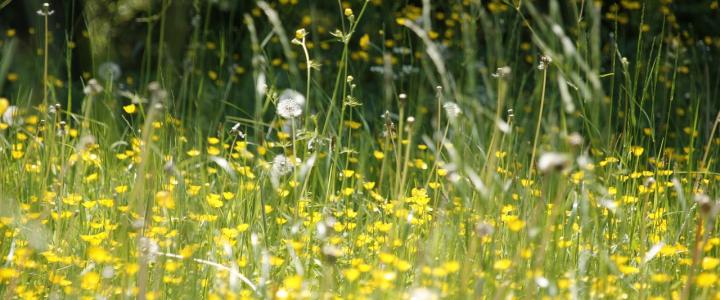
GREENWorks March 2024: Spring is in the Air… and so are Allergens!
Spring is in the air, and so is the pollen. How will you protect yourself this upcoming allergy season? In New England, the pollen season usually starts in April and continues into around September, coming in waves. Tree pollen is especially abundant in the spring, while grass pollen begins in May and continues throughout much of the summer. There is also a weed pollen season that peaks in August and September. The reason allergy sufferers have such a difficult time in the beginning of summer is thanks to the combination of both tree and grass pollen in the air at the same time. To top it all off, environmental changes have begun to lengthen our usual pollen season timeline.
What happens during pollen season?
Pollen season occurs in the spring, summer and fall, but most would best recognize this phenomenon during spring. Pollen is a fine to coarse powdery substance that is created by specific plants as part of their reproduction process, usually from grasses, trees and weeds. The start of this process is initiated by the temperature changes when transitioning between seasons, which trigger these sensitive plants as to when it’s time to start releasing pollen.
The environment and its affect on pollen season
The New England climate is ever-changing. This includes varying precipitation patterns, seasonal air temperatures and an increase of carbon dioxide in the atmosphere. Our constantly changing environment has caused the pollen season to not only become longer, but also creates more dense pollen. According to a study published in the scientific journal, Proceedings of the National Academy of Sciences (PNAS), in 2021, the pollen season has lengthened by 20 days and increased in pollen concentration by 21%. This may explain why some people who aren’t normally susceptible to pollen allergies have noticed an increase in allergen sensitivities during this time of year. These changes could lead to some major health impacts like allergic reactions and asthma symptoms. With an increased exposure to pollen, it increases a person’s risk of developing symptoms like nasal congestion, sinus pressure, itchy eyes, runny nose, cough and sore throat.
How can I protect myself?
With the increased potential of being affected by allergies this season, consider some of these ways to lessen the severity of symptoms:
Being cautious outdoors:
Try to take precautions when you venture outside during peak pollen days. This could be as simple as limiting time spent outside when the forecast calls for high pollen counts, and especially in the morning when pollen is most concentrated. When you do go outside, wearing a mask and sunglasses will help reduce particle exposure in the eyes and airway. Be sure to rinse off in the shower after extended periods of time spent outside to remove all those pesky particles.
Keeping a home allergy trigger-free:
A great way to maintain an allergy-safe house is by keeping all doors and windows shut during peak pollen periods. Using an air filtration device will help with keeping your air clean and dust-free as well.
Be sure to dust off surfaces and vacuum more often than usual to keep pollen particles at bay. You can also invest in (or make your own!) green cleaning products to spray down countertops and tables. Green products also reduce chemical exposures in your home, which can be another trigger for allergic or asthma reactions.
Taking recommended medicine:
Sometimes taking medicine for your allergies is a must to function day-to-day during this season. Talk to your healthcare provider about what they would recommend to you specifically. There are over-the-counter medications available at pharmacies and other stores, and prescription-based care that can be provided by a healthcare professional.
For more help on how to keep yourself safe this pollen season, check out Seasonal allergies: Nip them in the bud - Mayo Clinic.
# # #




